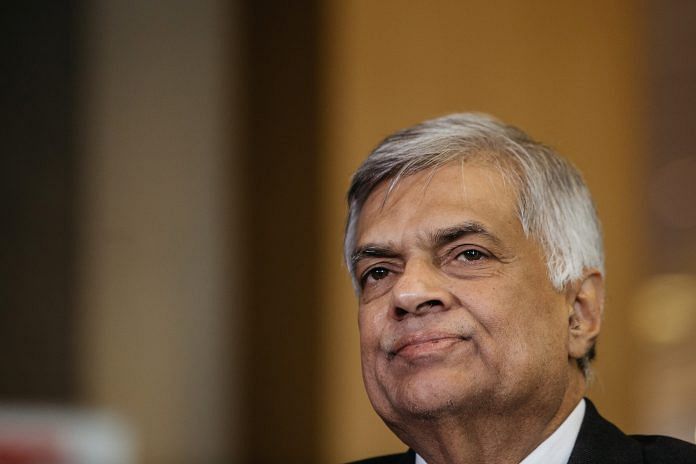With both India and Sri Lanka gearing up for general elections, cautious optimism should be the keyword in diplomacy.
The reinstatement of ousted Sri Lankan Prime Minister Ranil Wickremesinghe should lessen New Delhi’s worries, at least for the time being. The island nation has been spared serious damage, but the troubles cannot be said to be over. The increasing dissonance between President Maithripala Sirisena and the Prime Minister is alarmingly jarring and is no music to the Indian ministry of external affairs’ ears.
Prime Minister Wickremesinghe’s unceremonious removal and return is probably one of a kind event in the history of any democracy. But New Delhi cannot afford to be complacent just yet. The court battles and war of words may be over, but the real struggle for power begins now. Shortly after reinstating Wickremesinghe, amidst handshakes and greetings during the second oath taking, President Sirisena raked up charges of unbridled corruption under Wickremesinghe and expressed doubts if the two can work together.
The 50 days of drama spinning into never-before-seen court battles, scuffles in Parliament and constitutional crisis gave sleepless nights to New Delhi and Prime Minister Narendra Modi who had a reason to be happy when former President Mahinda Rajapaksa lost his post in 2015. India made no secret of its worry about former strongman Rajapaksa tilting towards China and linking Colombo to the Chinese bandwagon of OBOR countries. His elevation as PM, now termed illegal, was seen as a strategic victory for China, which could dabble in politics in Sri Lanka, literally in India’s backyard.
While New Delhi played an important role in Colombo’s war against the dreaded LTTE, it was China who was first among the few countries that came forward to give financial assistance for reconstruction projects in 2009. Rajapaksa was praised as the leader who decisively ended the island’s terrorism problem. Although initially, he adopted a balanced approach, soon his resistance to Chinese loans weakened. With many of his family members and close aides dotting the corridors of power, charges of corruption and syphoning off large amounts of ill-gotten wealth for private projects increased.
Under the guise of supporting post-war reconstruction, Beijing liberally funded projects in Sri Lanka, but the government diverted most of it to the south of the island, which was least affected due to the internal strife. During Rajapaksa’s tenure from 2010 to 2015, his pet projects, the Hambantota port and the Mattala Rajapaksa International Airport and several other constructions got a $4.8 billion Chinese loan at a very high-interest rate of 6.3 per cent.
Also read: Rajapaksa’s dark legacy looms large over Sri Lanka and won’t clear anytime soon
In 2015, the tide turned against Rajapaksa and one of his then ministers Maithripala Sirisena revolted against him promising, among other things, to correct the “tilt towards China” and restore balance. After assuming office as President in 2015, Sirisena even put on hold some of the projects awarded to China. But soon in a policy reversal, most of the cancelled projects were re-commissioned. China is said to have given $295 million to Sirisena’s government to be utilised for “any project of his choice”.
New Delhi was put in an embarrassing position as it had accused Rajapaksa of tilting towards China to the detriment of India’s security and strategic interests. But soon his successor too walked on the same path much to the chagrin of India. While Jinping called Chinese support for Sri Lanka a “win-win situation”, former China supporter Rajapaksa has now surprisingly turned anti-China and vows to turn to India for economic support.
After overseeing successful protests against Chinese takeover of Hambantota, deteriorating economy and demanding immediate holding of provincial council elections (where he stood a good chance of winning), Rajapaksa rushed to New Delhi in September and met with a number of friends and well-wishers in and out of the government.
Meanwhile, Prime Minister Ranil Wickremesinghe, accompanied by a large team of ministers and officials, also visited India in October and assured the hosts of cementing a “historically close” relationship to the best mutual advantage. But the real reason for this visit could have been damage control after the earlier visit by his rival.
Soon after these visits, in a sudden and surprising move, President Maithripala Sirisena sacked his own Prime Minister and appointed his one time bête-noir Mahinda Rajapaksa in Ranil Wickremesinghe’s place. All hell broke loose in Sri Lankan Parliament and the matter went to the apex court.
The amended Constitution of Sri Lanka (19th Amendment) does not allow the President to dissolve Parliament at will before the completion of its term. Also, under the presidential form of government, the Prime Minister can be dismissed only under special circumstances. Maithripala Sirisena was surely caught on the wrong foot.
As of now, the three leaders of the Colombo impasse are lying low, but none have buried the hatchet. Sooner or later, the knives will be out in the open, and the race for absolute political power will begin signalling a new proxy war between New Delhi and Beijing over Sri Lanka.
New Delhi will have to increase its engagement with Colombo, support developmental projects, relax trade and taxation rules so as to facilitate greater commerce between the two countries. With both countries gearing up for general elections, cautious optimism should be the keyword in diplomacy.
Also read: President Sirisena reinstates Wickremesinghe as prime minister to end Sri Lanka crisis






